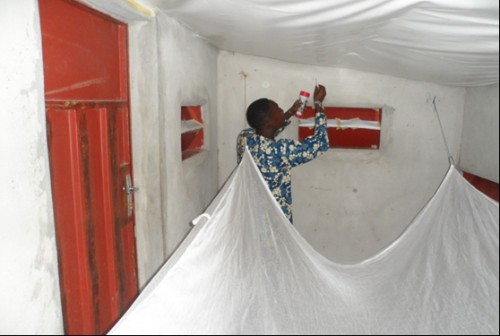Vol. 4, Issue 5, Part A (2017)
Comparative efficacy of five types of long-lasting insecticide-treated nets (PermaNet 3.0®, PermaNet 2.0®, Olyset Plus®, Olyset Net®, and LifeNet®) in a semi-natural environment against resistant Anopheles gambiae sensu lato and Mansonia africana in Cove, Benin
Author(s): Marius Allossogbe, Virgile Gnanguenon, Fiacre R Agossa, Jacque Zola-Sahossi, Bruno Akinro, André Houtoukpe, Rodrigue Anagonou and Martin Akogbeto
Abstract: To increase the effectiveness of long-lasting insecticide-treated nets (LLINs) to reduce man-vector contact and to develop a rational management strategy of insecticide resistance, a new generation of LLINs treated with pyrethroids and piperonyl butoxide (PBO) was developed. The present study aimed to verify the effects of the LLINs against pyrethroid-resistant Anopheles gambiae s.l. populations in Benin.
The assessment of these LLINs was conducted at an experimental station located in a large rice-growing area in Cove district, Benin. PermaNet 2.0®, PermaNet 3.0®, LifeNet®, Olyset Net®, and Olyset Plus® LLINs were used in this study with an untreated net as a control. Six experimental huts were used to randomly allocate one LLIN per hut and allow LLINs to be rotated at each collection. After the first collection, sleepers were randomly allocated to each hut. During the following nights, the sleepers were rotated to avoid confounding factors, such as the sleeper being attractive to the mosquitoes. Collections were conducted from 9:00 PM to 5:00 AM, and indicators were measured according to the protocol of the World Health Organization.
The exophily of An. gambiae s.l. was higher with the new generation LLINs Olyset Plus® (48.48%) and PermaNet 3.0® (78.66%) than with the other LLINs. The only LLIN to induce exophily of M. Africana was PermaNet 3.0®. LifeNet® and Olyset Net® were no more effective than the control at reducing the blood feeding rate of An. gambiaes.l. (P>0.05). However, the new generation of LLINs treated with PBO strongly inhibited blood feeding (61.67% for Olyset Plus® and 51.79% for PermaNet 3.0®). High mortalities of M. africana were observed with LLINs, especially for the Olyset Plus® (76.78%) and PermaNet 3.0® (95.31%), whereas the mortality rates of An. gambiae s.l. were very low: the mortality rate was only 24.68% with PermaNet 3.0®, which was the most effective LLINs.
This study showed there was a significant heterogeneity in the bio-efficacy of the currently available LLINs against natural populations of An. gambiae s.l. in Cove that are resistant to pyrethroids. Both of the LLINs treated with PBO (PermaNet 3.0® and Olyset Plus®) were more effective against mosquitoes than the other LLINs, which were only treated with pyrethroids.
Related Graphics: Click here for more related graphics

Fig.: Mosquito collection in experimental huts
Pages: 07-13 | 2167 Views 138 Downloads
How to cite this article:
Marius Allossogbe, Virgile Gnanguenon, Fiacre R Agossa, Jacque Zola-Sahossi, Bruno Akinro, André Houtoukpe, Rodrigue Anagonou, Martin Akogbeto. Comparative efficacy of five types of long-lasting insecticide-treated nets (PermaNet 3.0®, PermaNet 2.0®, Olyset Plus®, Olyset Net®, and LifeNet®) in a semi-natural environment against resistant Anopheles gambiae sensu lato and Mansonia africana in Cove, Benin. Int J Mosq Res 2017;4(5):07-13.







